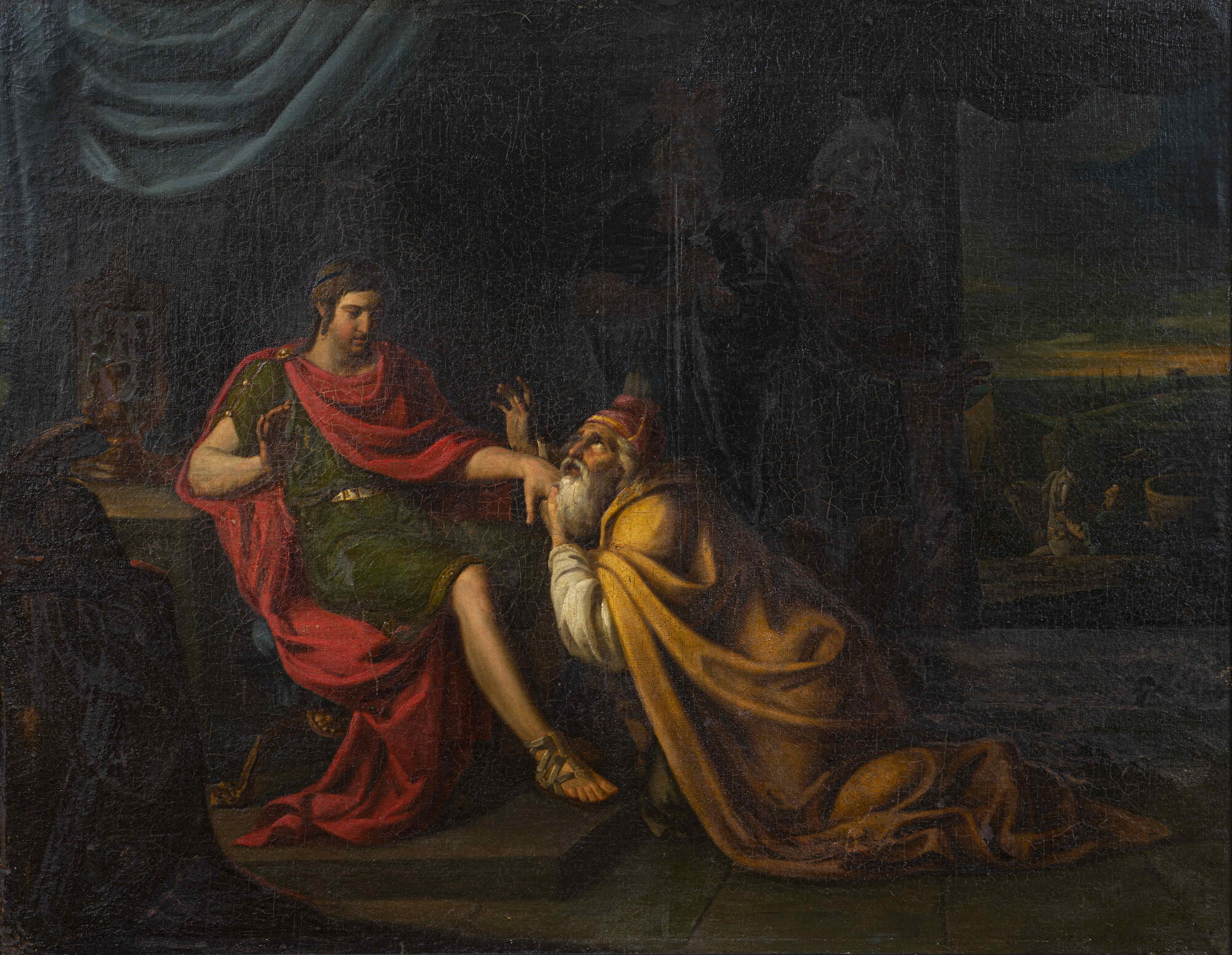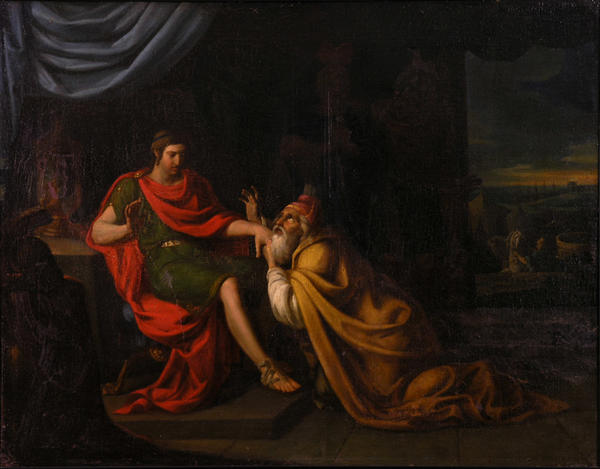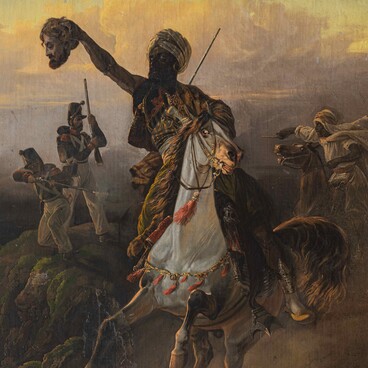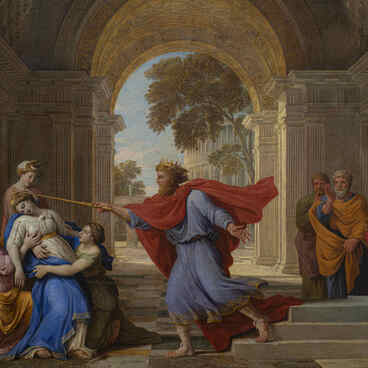Alessandro Varotari (1588 — 1650) was an Italian painter of the Late Mannerist and Early Baroque periods and a representative of the Venetian school of painting. He had the nickname Padovanino, which means “born in Padua”. His father, a local painter and architect, taught him drawing and painting. As an aspiring painter, he imitated Titian and Veronese.
Varotari was an outstanding copyist: he is known to have traveled to Rome twice to copy paintings by Renaissance artists, including Michelangelo. But his own works had a certain narrative and sensual style as well: Padovanino mostly depicted religious and mythological themes. However, he excelled particularly in portraying landscapes and child figures.
The painting “Priam and Achilles” is part of a series of works devoted to ancient Greek motifs. It is based on a dramatic episode from Homer’s “Iliad”, in which the King of Troy Priam pleads with Achilles, wishing to retrieve the body of his eldest son Hector, killed by the famous Trojan. Priam throws himself at Achilles’ feet and cries out in despair: “Remember your father, an old man like me!”. This story was extremely popular in ancient, Western European and Russian art. Amphorae, frescoes, mosaics, paintings and graphic canvases — the image of the pleading old man at the feet of the hero was depicted in different techniques and with different emphases.
Varotari’s “Priam and Achilles” is painted in the traditions of the academic school of painting. The composition is built on three planes. In the foreground are the protagonists: Achilles seated and Priam on his knees in front of him. The two central figures form a triangle with Achilles’ head at its highest point. Directly above him is a bluish-lilac curtain that shields the scene with the main characters from the secondary characters. In the background on the right is a drape thrown open, revealing the indispensable fragment of the landscape.
In the academic painting system, the color was secondary to the composition, so artists developed certain color patterns, for example, for the cape of the main character. And drapery with heavy folds added extra grandeur and pathos to the “high subject”.
Varotari was an outstanding copyist: he is known to have traveled to Rome twice to copy paintings by Renaissance artists, including Michelangelo. But his own works had a certain narrative and sensual style as well: Padovanino mostly depicted religious and mythological themes. However, he excelled particularly in portraying landscapes and child figures.
The painting “Priam and Achilles” is part of a series of works devoted to ancient Greek motifs. It is based on a dramatic episode from Homer’s “Iliad”, in which the King of Troy Priam pleads with Achilles, wishing to retrieve the body of his eldest son Hector, killed by the famous Trojan. Priam throws himself at Achilles’ feet and cries out in despair: “Remember your father, an old man like me!”. This story was extremely popular in ancient, Western European and Russian art. Amphorae, frescoes, mosaics, paintings and graphic canvases — the image of the pleading old man at the feet of the hero was depicted in different techniques and with different emphases.
Varotari’s “Priam and Achilles” is painted in the traditions of the academic school of painting. The composition is built on three planes. In the foreground are the protagonists: Achilles seated and Priam on his knees in front of him. The two central figures form a triangle with Achilles’ head at its highest point. Directly above him is a bluish-lilac curtain that shields the scene with the main characters from the secondary characters. In the background on the right is a drape thrown open, revealing the indispensable fragment of the landscape.
In the academic painting system, the color was secondary to the composition, so artists developed certain color patterns, for example, for the cape of the main character. And drapery with heavy folds added extra grandeur and pathos to the “high subject”.



